
Corylophidae is a family of minute hooded beetles, sometimes called minute fungus beetles, in the superfamily Coccinelloidea. There are about 18 genera and at least 120 described species in Corylophidae. They feed on microfungi such as molds, and are often found associated with bark, as well as in leaf litter and other decaying vegetation. In older literature, the family name was often given as Orthoperidae.

Leiodidae is a family of beetles with around 3800 described species found worldwide. Members of this family are commonly called round fungus beetles due to the globular shape of many species, although some are more elongated in shape. They are generally small or very small beetles and many species have clubbed antennae.
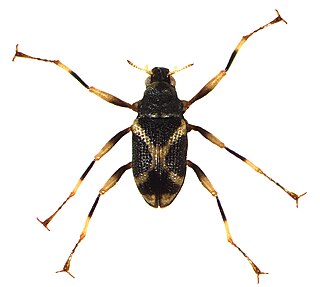
Elmidae, commonly known as riffle beetles, is a family of beetles in the superfamily Byrrhoidea described by John Curtis in 1830. Both adults and larvae are usually aquatic, living under rocks in fast-flowing shallow areas of streams, such as riffles, feeding on algae and biofilms. There are more than 150 genera and 1,500 described species in Elmidae. The oldest record of the group is Cretohypsilara from the Cenomanian aged Burmese amber.
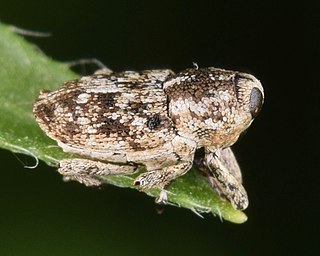
Zygopini is a tribe of twig and stem weevils in the beetle family Curculionidae. There are more than 20 genera and at least 250 described species in Zygopini. 83 species are currently known from the 11 genera occurring north of South America, 8 genera occur exclusively in South America, and 2 are recorded from Africa.

Leiodes is a genus of round fungus beetles in the family Leiodidae. There are at least 110 described species in Leiodes.

Micropeplus is a genus of rove beetles in the family Staphylinidae. There are at least 40 described species in Micropeplus.

Onthophilinae is a subfamily of clown beetles in the family Histeridae. There are about 8 genera and at least 80 described species in Onthophilinae.
Merinus is a genus of darkling beetles in the family Tenebrionidae. There is at least one described species in Merinus, M. laevis.
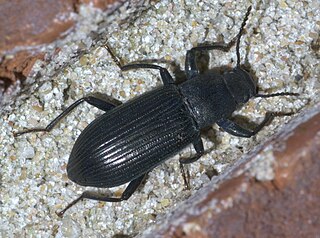
Xylopinus is a genus of darkling beetles in the family Tenebrionidae. There are at least three described species in Xylopinus.
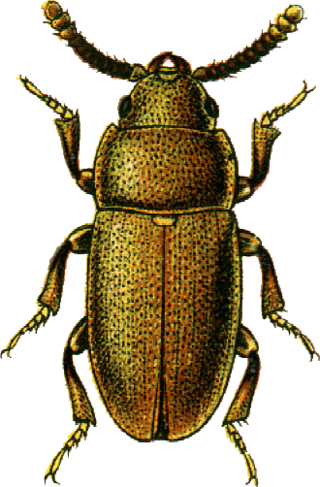
Cryptophaginae is a subfamily of silken fungus beetles in the family Cryptophagidae. There are about 11 genera and more than 180 described species in Cryptophaginae.

Synchitini is a tribe of cylindrical bark beetles in the family Zopheridae. There are about 19 genera and at least 40 described species in Synchitini.
Euphaniini is a tribe of spiny-legged rove beetles in the family Staphylinidae. There are at least 8 genera in Euphaniini.

Pinophilini is a tribe of rove beetles in the family Staphylinidae.
Aphelosternus is a genus of clown beetles in the family Histeridae. There is at least one described species in Aphelosternus, A. interstitialis.
Mauroniscidae is a family of cleroid beetles, formerly included in the family Melyridae. There are presently five or six genera and roughly 30 described species in Mauroniscidae, all of which are native to the Americas. Almost nothing is known about their biology.
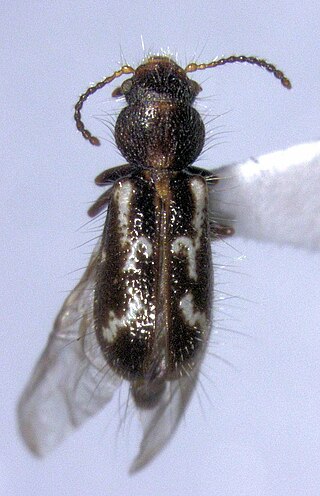
Metaxina is the only genus in the beetle family Metaxinidae. Its only species is Metaxina ornata. It endemic to the South island of New Zealand, where it is associated with sooty mold growing on Nothofagus trees. Both the larvae and adults are likely predaceous, feeding on insects and other arthropods. It is considered to be a member of the superfamily Cleroidea. Genetic studies have suggested that Metaxina should be considered a member of Chaetosomatidae, rather than constituting its own family.

Priasilphidae is a family of beetles in the superfamily Cucujoidea. They have a Gondwanan distribution, with the three known genera Chileosilpha, Priasilpha and Priastichus being native to Chile, New Zealand and Tasmania respectively. Most species are flightless, lacking wings. Priasilphids inhabit decaying wood and moss in forest habitats. They are likely mycophagous, feeding on fungi.
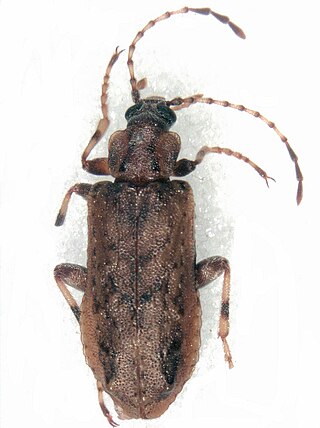
Promecheilidae is a family of beetles in the superfamily Tenebrionoidea. Perimylopidae is considered a synonym. They are found in southern South America and associated archipelagos like South Georgia and the Falklands, New Zealand and Tasmania. Some species are associated tree ferns and moss-covered dead wood, and other forested habitats, while others are associated with peat bogs, grasslands and coastal habitats. They are probably phytophagus, feeding on lichen, moss, and other plant material.
Piazurini is a tribe of true weevils in the beetle family Curculionidae. There are about 12 genera and more than 400 described species in Piazurini.
Othippiini is a tribe of true weevils in the beetle family Curculionidae. Of the eight genera in Othippiini, only Egiona and Othippia are not monotypic. Acoptus suturalis is the only species of the tribe found in the New World.














